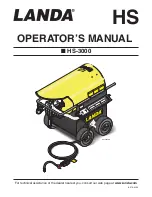
PROBLEM
POSSIBLE CAUSE AND
IN
PERMANENT PRESS
AND “NO-IRON”
ITEMS
SNAGS, HOLES,
TEARS,
OR
EXCESSWE WEAR
clothes in dryer after tumbling stops.
and hang clothes immediately.
clothes in dryer. Dry
one washer load a time. Do not combine loads.
laundering
items, such as work
clothes, with lighter Permanent Press items such as shirts or blouses. Do not wash
Permanent Press with regular laundry.
*
many clothes in washer.
Press
should always smaller than
regular loads. . . no more than medium loads to
clothes room to move freely.
●
Incorrect
wash and dry cycles. Use
Press Wash cycle which provides a
rinse to minimize
use
Press Dry cycle.
Load, Medium
for
Small
Repeated washing in too hot water. Wash in cold or warm water with plenty
of detergent.
Accumulation of lime
due to use
detergents. If you must
a
non-phosphate detergent, avoid the use of
detergent.
●
Failure to use fabric softener. Proper use will minimize
To
1.
“Permanent Press” setting.
2.
and dry
“Permanent Press” setting.
3.
on high heat for
minutes and hang immediately.
4.
carefully.
5. Send to dry
fortressing.
6. Some
may remain which cannot be removed.
●
Pins on garments sharp objects left in pockets. Check to make sure such
are removed.
check washtub.
●
Snaps, hooks, sharp buttons, belt
zippers. Fasten hooks, zippers and
buttons. Remove sharp buttons and belt
This is especially important in
washing knits
snag easily. Turn knits inside out.
●
Holes with random square shapes with yellow discoloration maybe caused by
improper use of
bleach. Use
correct amount of bleach, using Bleach
Dispenser. Never add
bleach to wash tub or allow clothes to come into
contact with
bleach. Do not wipe up bleach
with clothes.
●
Chemicals such as hair bleach, dye, permanent wave solutions, battery acids and
toilet bowl cleaners may
fabric holes. Rinse towels and other articles that
came in contact with
chemicals
putting them in wash. Do not contaminate
articles with these
●
unnoticed tears may
process. Check garments before
washing
mend rips and tears.
23






































